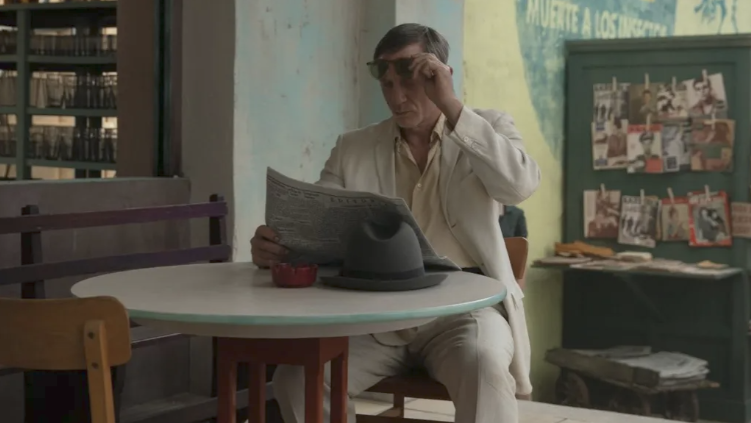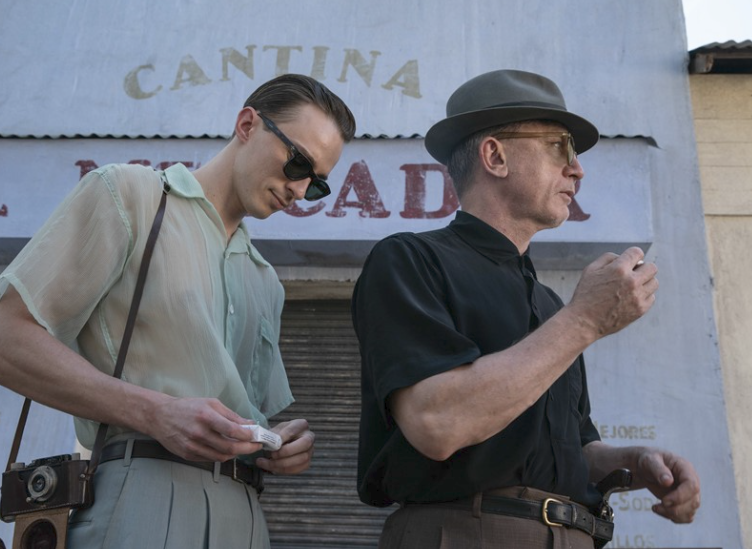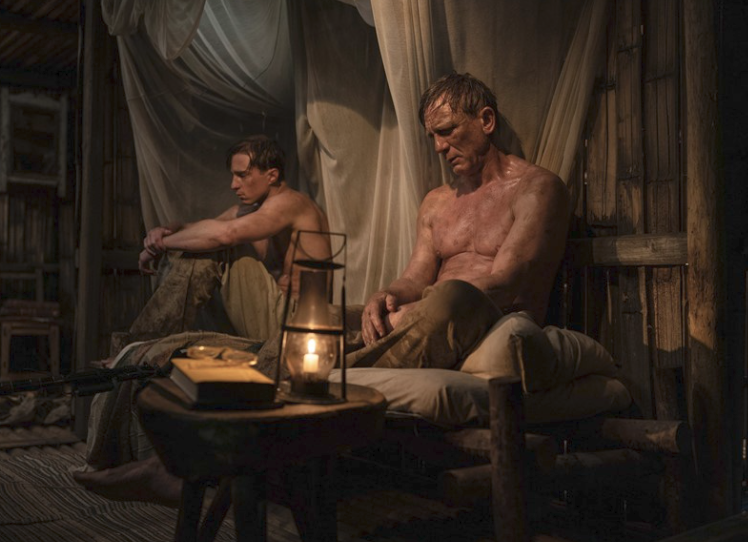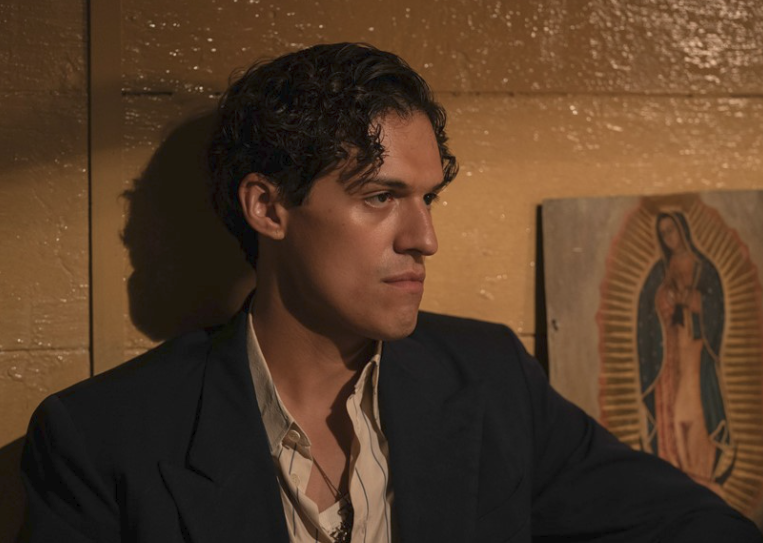
In 1951, in a Mexico City apartment, William S. Burroughs raised a handgun toward his wife Joan Vollmer during what was supposedly a drunken game of ‘William Tell.’ The shot that followed would haunt him – and American literature – forever. This tragic intersection of art and life now finds new resonance in Luca Guadagnino’s Queer, which premiered at the 80th Venice Film Festival. Working from Justin Kuritzkes’ (The Potion Seller) adaptation of Burroughs’ semi-autobiographical novel, Guadagnino continues his masterful translation of challenging literature to screen, following Call Me by Your Name and Bones and All.
The film is divided into four chapters, each bathed in its own dreamy hue by cinematographer Sayombhu Mukdeeprom, whose magical lens transforms Mexico City into a fever dream of desire and alienation.

Set predominantly in Mexico City, which Guadagnino portrays as a haven for queer men, the film follows William Lee (Daniel Craig), an American expat who spends his days drifting between bars, drinking heavily and making unsuccessful advances on men. His fortunes change when he encounters the enigmatic Eugene Allerton (Drew Starkey). However, Lee and his circle of friends, including a delightfully unhinged Jason Schwartzman, remain suspicious of Eugene, particularly due to his frequent chess matches with Mary, a local figure who seems to hold sway over the city’s social scene.
While Guadagnino maintains that Queer is more than just a story of unrequited love, Eugene’s unpredictable nature remains at the heart of William’s fascination. Their relationship moves between moments of intense connection and distance, shown through the film’s intimate scenes. As their story develops, we witness Lee and Eugene’s intimacy blossom through steamy sex scenes that are both tender and raw.
Lorem ipsum dolor sit amet, consectetur adipiscing elit. Ut elit tellus, luctus nec ullamcorper mattis, pulvinar dapibus leo.

The story then takes an interesting turn – Lee becomes determined to travel to South America to experience a drug that supposedly grants telepathic powers, a quest that mirrors Burroughs’ own experiences with psychedelics. Lee’s dual desire for both the drug and Eugene leads to a surreal adventure through jungles and picturesque beaches.
Guadagnino’s directorial essence shines through in the beautiful, mirage-like pastel palette, suggesting a world where reality and fantasy have become indistinguishable – perhaps mirroring the couple. Eventually, the two make their way through the jungle and arrive at a hut where a mysterious woman (Lesley Manville) confirms she possesses the drug Lee has been seeking.
The liquid drug’s ingestion ignites the film’s most daring sequence—a hallucinatory spiral where Lee and Eugene meld into each other through glitching, blurred imagery, leaving the audience both unsettled and spellbound. Through surreal visuals of the human body being obscured and contorted into different shapes, pulled across various dimensions, it becomes clear the drug has taken full effect, transforming their physical and psychological realities into something entirely new and profound.

Lee’s obsession with the telepathic drug, becomes an increasingly central thread throughout Queer, though his true intentions remain deliberately ambiguous. Is it his desperate desire to maintain a stronger hold on Gene, whose affections prove maddeningly inconsistent. The possibility of telepathy tantalises Lee with the promise of understanding – or perhaps controlling – his elusive lover’s thoughts. This ambiguity serves as a powerful metaphor for the broader themes of desire, control, and the fundamental impossibility of truly knowing another person, even in our most intimate relationships.
Burroughs’ troubled life continued to cast a dark shadow over his work long after that fatal night in Mexico City. Fleeing there to avoid drug charges in the U.S, he was already in the grip of a heroin addiction that would define much of his life. The director weaves these biographical threads into every luminous frame. The film’s William Lee – named after Burroughs’ own pen name – carries this same weight of exile and addiction. But where Burroughs’ novel ends in despair and psychological fracture, the film dares to imagine something different. It transforms his story into a fever dream about love, power, and the mind’s darkest corners. The swirling psychedelic scenes aren’t just creative flourishes – they’re windows into a tortured soul seeking redemption, mirroring Burroughs’ own unrelenting search for a peace he could never grasp after that fateful night in Mexico City.
The magic of Queer lies in its dreamlike quality, where Mukdeeprom’s cinematography transforms every frame into an Edward Hopper painting brought to life – all soft pastels and long shadows that blur the line between reality and fantasy.
Trent Reznor and Atticus Ross’s haunting score, punctuated perfectly by Nirvana’s Come as You Are creates moments of pure cinematic electricity. In Guadagnino’s hands, what could have been a simple tale of unrequited love becomes a hallucinatory journey through desire itself, where the surreal South American sequences and digitally rendered streetscapes mirror our own altered states of consciousness. Like the ayahuasca journey at its heart, Queer reminds us that the most profound trips are often the ones we take in search of love.
